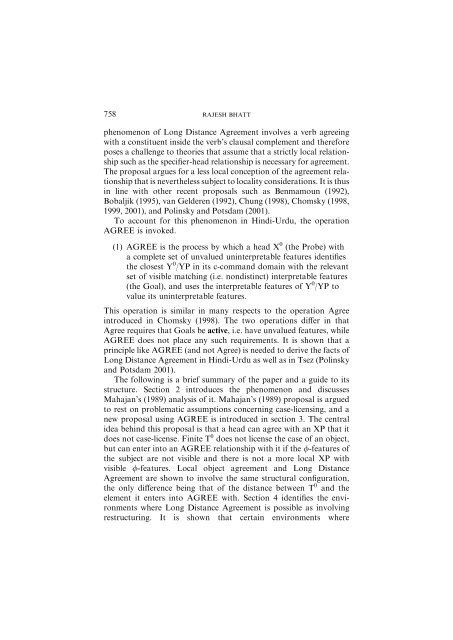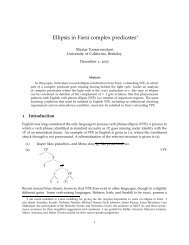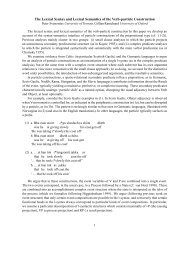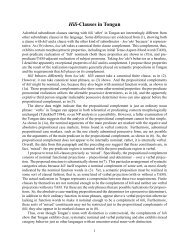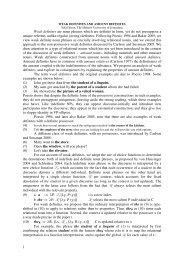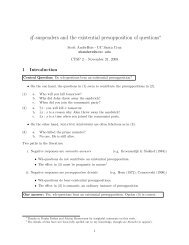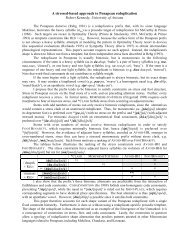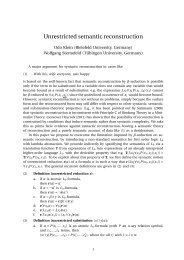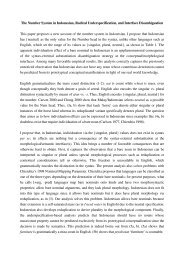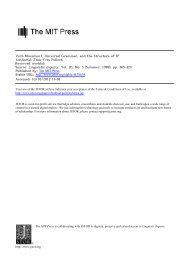LONG DISTANCE AGREEMENT IN HINDI-URDUw This paper ...
LONG DISTANCE AGREEMENT IN HINDI-URDUw This paper ...
LONG DISTANCE AGREEMENT IN HINDI-URDUw This paper ...
Create successful ePaper yourself
Turn your PDF publications into a flip-book with our unique Google optimized e-Paper software.
758RAJESH BHATTphenomenon of Long Distance Agreement involves a verb agreeingwith a constituent inside the verb’s clausal complement and thereforeposes a challenge to theories that assume that a strictly local relationshipsuch as the specifier-head relationship is necessary for agreement.The proposal argues for a less local conception of the agreement relationshipthat is nevertheless subject to locality considerations. It is thusin line with other recent proposals such as Benmamoun (1992),Bobaljik (1995), van Gelderen (1992), Chung (1998), Chomsky (1998,1999, 2001), and Polinsky and Potsdam (2001).To account for this phenomenon in Hindi-Urdu, the operationAGREE is invoked.(1) AGREE is the process by which a head X 0 (the Probe) witha complete set of unvalued uninterpretable features identifiesthe closest Y 0 /YP in its c-command domain with the relevantset of visible matching (i.e. nondistinct) interpretable features(the Goal), and uses the interpretable features of Y 0 /YP tovalue its uninterpretable features.<strong>This</strong> operation is similar in many respects to the operation Agreeintroduced in Chomsky (1998). The two operations differ in thatAgree requires that Goals be active, i.e. have unvalued features, whileAGREE does not place any such requirements. It is shown that aprinciple like AGREE (and not Agree) is needed to derive the facts ofLong Distance Agreement in Hindi-Urdu as well as in Tsez (Polinskyand Potsdam 2001).The following is a brief summary of the <strong>paper</strong> and a guide to itsstructure. Section 2 introduces the phenomenon and discussesMahajan’s (1989) analysis of it. Mahajan’s (1989) proposal is arguedto rest on problematic assumptions concerning case-licensing, and anew proposal using AGREE is introduced in section 3. The centralidea behind this proposal is that a head can agree with an XP that itdoes not case-license. Finite T 0 does not license the case of an object,but can enter into an AGREE relationship with it if the /-features ofthe subject are not visible and there is not a more local XP withvisible /-features. Local object agreement and Long DistanceAgreement are shown to involve the same structural configuration,the only difference being that of the distance between T 0 and theelement it enters into AGREE with. Section 4 identifies the environmentswhere Long Distance Agreement is possible as involvingrestructuring. It is shown that certain environments where


